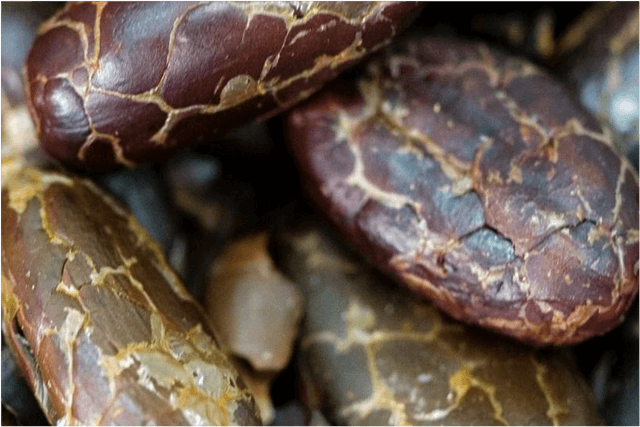
Making Good Use of Cacao Shells
All chocolate makers recognize the excitement of seeing (and hearing) a constant flow of cacao nibs falling out of the winnower, ready for the grinder. And then their eye falls on the husks... How to get rid of these dry and crisp brown shells? Instead of discarding the husks, here are some ideas to give them a second life:
Fodder
Cacao shells are full of protein, fibre, minerals, and bioactive compounds, and are an excellent addition for animal feeding. Mix it in the fodder for fish, pigs, goats and other ruminants, and it is a good and cheap way to reduce the costs of conventional fodder. Make sure the husks do not make up more than 5% of the fodder; otherwise, the theobromine and caffeine levels will become too high to be healthy for the animals.
Organic fertilizer and weed killer
Spreading cacao husks over garden beds is an attractive top cover for flowerbeds and vegetable patches. Cacao shell mulch is not only pretty, it is also an excellent way to increase soil vitality, retain moisture, maintain an even temperature, reduce weed growth, and reduce the need to use herbicides. So scatter those husks in your garden! Bio char made out of cacao shells is also a natural fertilizer; the essential nutrients in the shells are slowly released into the soil.
Adsorbent
Cacao shells are an adsorbent, capable of entrapping pollutants out of water – especially some heavy metals. There are experiments taking place to use the adsorbent qualities of cacao shells for cleaning wastewater.
Drinks
Cacao husk tea is delicious, so put some husks in a tea ball and serve family and friends a nice cupper. The shells can also be used to make a cold brew. Soak the husks for 24 hours in cold water, filter, and you have a slightly chocolaty drink. Nice with ice cubes on a hot day, or mixed with gin, rum, whiskey for a grownup chocky mix drink.
Packaging and other material
With their high fibre content cacao shells are a suitable ingredient for making paper and packaging materials. Some chocolate makers wrap their chocolate in paper made of cacao husks. What a wonderful thought that the nibs are repacked in their former shells!
A more 21st century recycle option is up-cycling the shells in material for 3D printing.
Cookies and other baking
The high fibre content makes cacao shells also an excellent ingredient for baking. Some chocolate makers make cookies with the cacao husks – full of dietary fibres and chocolaty flavour is included for free. We haven’t tried it yet, but if cacao shells are good for cookies, they must be good for cakes, breads and other bakes.
Fabric dye
Cacao shell pigment can be used as a natural dye for fabric colouring. One study even shows that a dye with cacao shell on cotton results in ultraviolet colouring, making it useful for production of UV protective cotton fabric.
Biofuel
The production of ethanol with cacao shells is in an experimental phase, and the results are promising. Cacao shells also showed good potential for biogas production. So maybe in the future we will drive cars on cacao shell energy. The thought alone makes us want to eat more chocolate – it is good for the planet!
So far our listing with ideas about reusing cacao husks. It is far from an exhaustive listing. Chocolate makers have shown to be very imaginative and creative with cacao husks, turning them into cooking oil, candles and much more. Let us know if you know of other uses. We can share these in a future update, when we also focus on the other important by-products of cacao – the cacao pods and the cacao mucilage (or pulp).
